Howling wolves, spooky castles and tales of bloodthirsty vampires may be some of the clichés which come to mind when Transylvania is mentioned. However, the modern-day reality is far from frightening. In part two of our Romania in Focus series, we take a look at this intriguing destination.
Transylvania: The Ancient Heart of Romania
Transylvania is a historical region located in the heart of Romania. Bordered to the north and south by the Carpathian mountain range, it extends west towards the Apuseni Mountains. The area is well-known for its spectacular wilderness and rich history. It also contains several major cities, including Sighișoara, Sibiu and Cluj-Napoca.
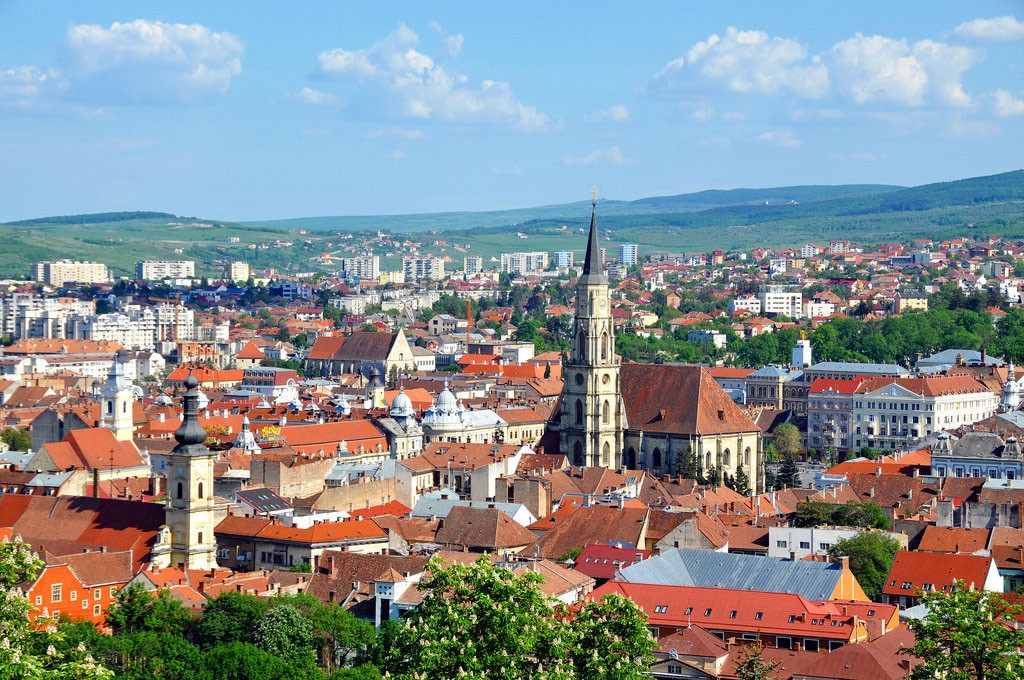
The city of Cluj-Napoca, often referred to as the “Capital of Transylvania”.
Separating Truth From Fiction
Transylvania has become commonly associated with vampires throughout the English-speaking world, largely due to the influence of Bram Stoker’s classic novel Dracula. Published in 1897, the book introduced the character of Count Dracula, and had a huge impact on popular culture. Despite being a work of fiction, Dracula does contain some historical references. The story’s Transylvanian setting and the supposed inspiration of Vlad Dracula (otherwise known as Vlad Tepes, or Vlad the Impaler) for the main character have ensured that the region will be forever known as the home of Dracula.
Many tour companies play up to these associations (witness the number of “Dracula tours” on offer). However, Transylvania is an interesting enough destination in its own right without having to delve into the world of fiction. A sense of history seeps from its dramatic landscapes, which are adorned with some of the country’s most spectacular architecture.
Ancient Architecture
Of the many fine examples of castles to be found throughout the region, Bran Castle is surely the most famous. Also known as “Dracula’s Castle” (as it is said to have inspired one of the locations in Bram Stoker’s novel), Bran Castle is arguably the most beautiful medieval fortress in Romania. Dating back to at least the late 12th century, the castle has a long and checkered history.
During the 1400’s, it was used in defense against the Ottoman Empire, and later served as a customs post on the mountain pass between Transylvania and Wallachia. The castle belonged to the Hungarian Royals, and played a militarily strategic role up until the mid-18th century.
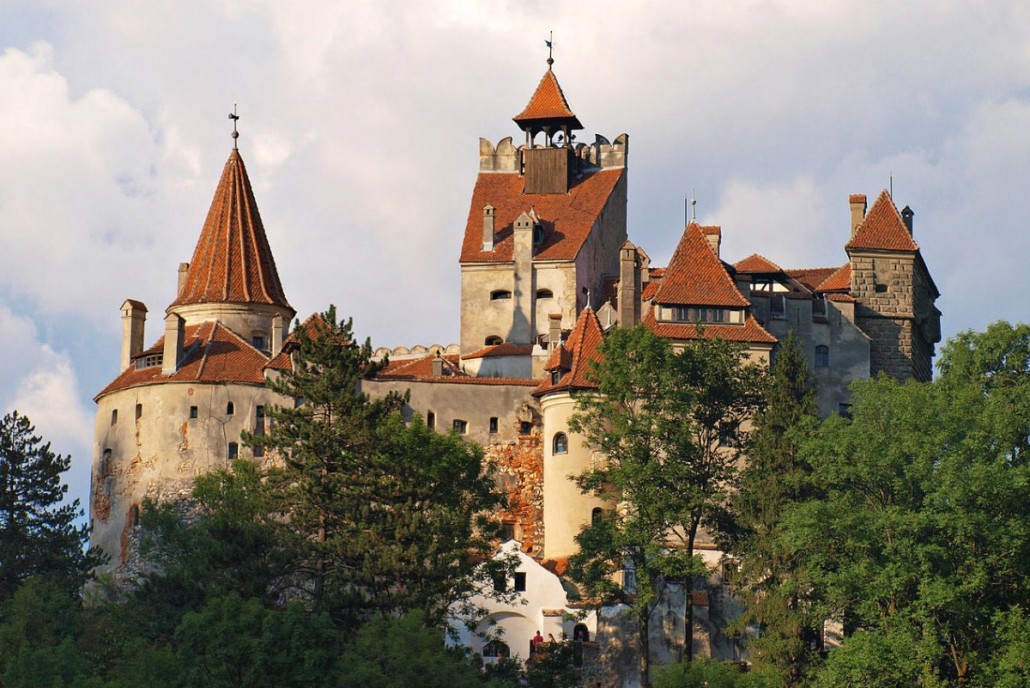
The famous Bran Castle, said to have inspired Bram Stoker’s classic Dracula story, looks less frightening during the day time.
Another must-see castle is Corvin Castle. Located in Hunedoara, this Gothic-Renaissance fortress is one of the largest in Europe, and among the top attractions in Romania. A large and imposing structure with tall towers and an expansive inner courtyard, the castle features brightly colored roofs and balconies adorned with ornate stone carvings.
Two museums can be found within this massive structure. Many specialists in the fields of Medieval History and Archaeology consider Corvin Castle to be the best-kept medieval monument in southeastern Europe.
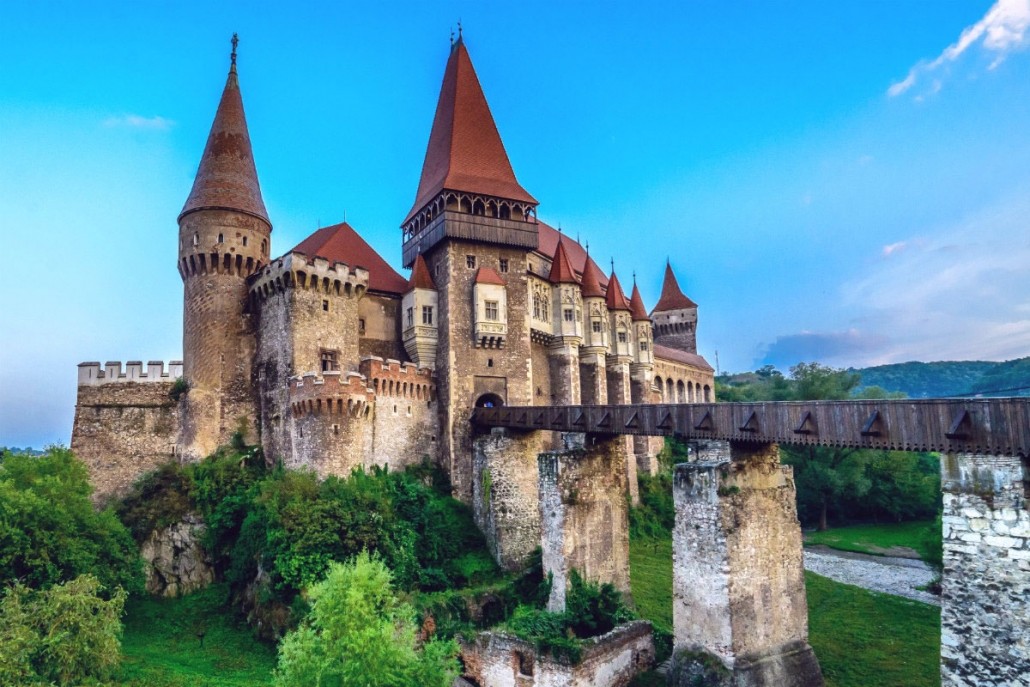
Corvin Castle, one of the finest examples of its type in the whole of Europe.
Wildlife and Wilderness
The diverse natural landscapes of the Carpathian Mountains offer plenty of scope for exciting outdoor experiences. Enjoy a walk through serene alpine meadows, trek around glacial lakes, or take in the lush-green scenery while horse riding or mountain biking.
If you are a mountain climbing enthusiast, you will find an abundance of peaks to scale. Rising over 2,500 meters above sea level, Moldoveanu Peak is Romania’s highest mountain. Located in Argeș County in the Southern Carpathians, it can be climbed all year round. Summer is generally a good period, however conditions are highly changeable, with sudden rain and thunderstorms making for tough going. Tread carefully in the wintertime, when the region is usually blanketed in a thick layer of snow and ice.
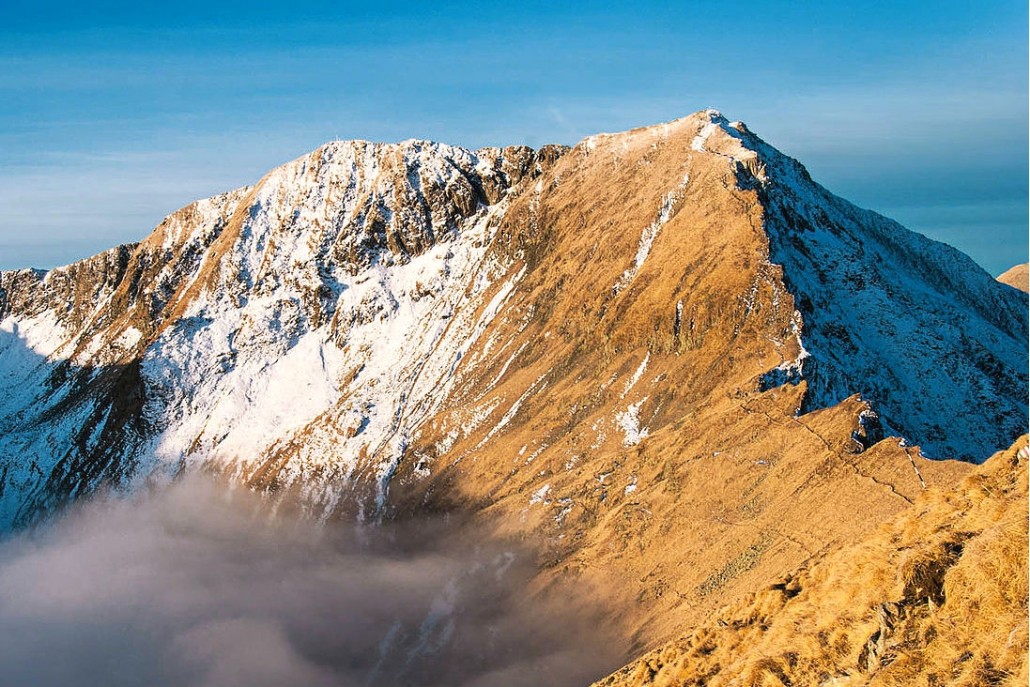
Moldoveanu Peak is Romania’s highest peak, towering more than two and a half kilometers above sea level.
Prefer to stay at ground level? You can still enjoy stunning views from the Transfagarasan Highway, a road running through the mountains. More than 150km in length, the Transfagarasan Highway is Romania’s best known road, and has become a popular tourist attraction. Here, you can take in the dramatic landscape from the comfort of your vehicle. The road runs more than 2km above sea level at it’s highest point, providing an outstanding vantage point from which to absorb this spectacular vista.
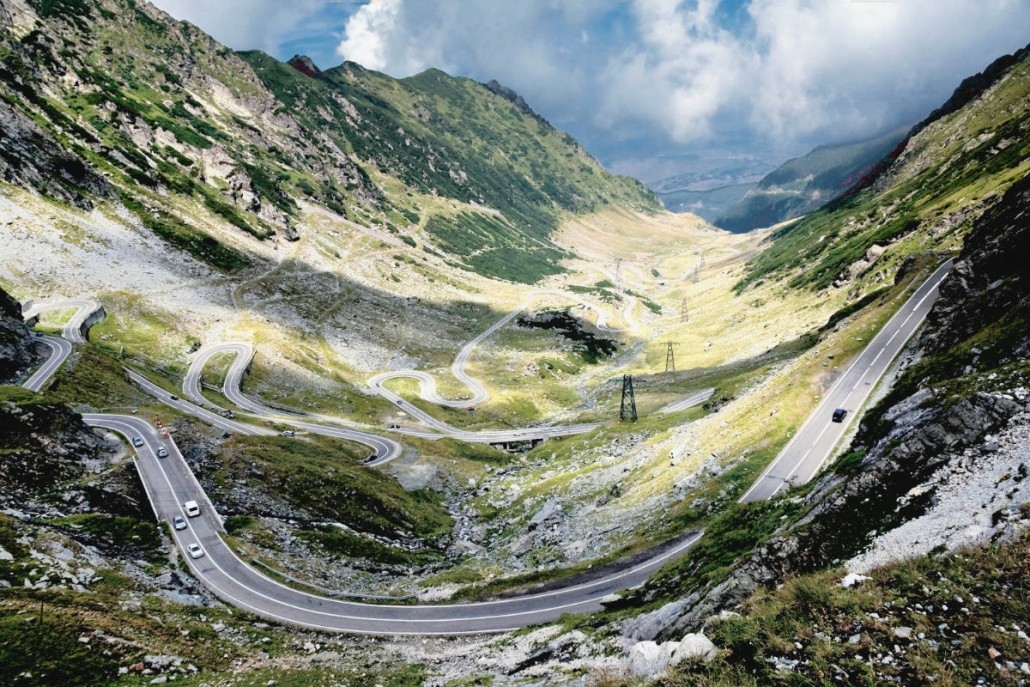
The Transfagarasan Highway offers panoramic views across the dramatic wilderness of the Carpathian Mountains.
The Carpathian Mountains region features one of the largest undisturbed forests in Europe. The area is a haven for wildlife, and home to impressive numbers of brown bears, wolves, lynx, deer and wild boar. A wide variety of excursions are available where you can come face-to-face with these majestic creatures. A trip to the Carpathian Mountains is a must for any nature lover visiting Romania.

The Eurasian lynx is a species of wildcat indigenous to the Carpathian Forests.
Crystal Caverns
Romania offers visitors a huge variety of different terrains to explore. Following our trip to the highest peaks of the Carpathian Mountains, the next stop on our tour of the region takes us deep underground.
Salina Turda is a salt mine located in the Durgău-Valea Sărată area of Turda, the second largest city in Cluj County. Salt is known to have been extracted at this location for over a thousand years, however the modern era has seen the mine open its doors to welcome tourists, with the establishment of a museum and visitor center dedicated to salt mining. Since then, over two million people have flocked to view its enchanting subterranean caverns.
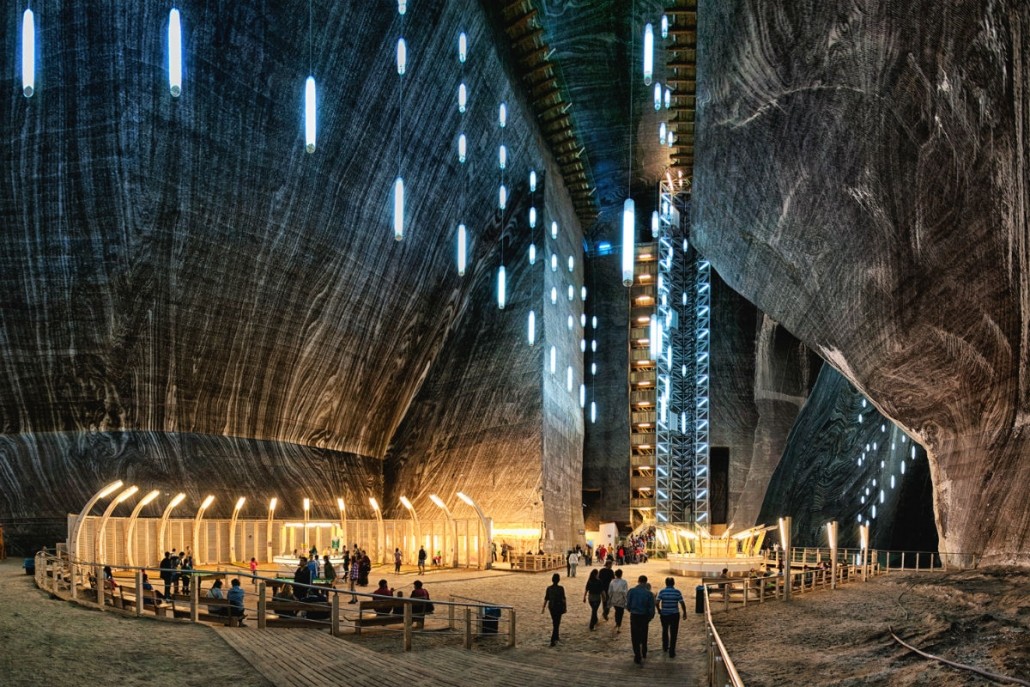
Tourists can explore the glistening caves of Salina Turda.
In 2014, Salina Turda was ranked by Business Insider as one of the top ten underground attractions in the world. In addition to the museum and visitor center, you can experience the mine’s halotherapy spa facilities. This natural therapy uses ionized air, pressure and humidity in the salt-lined caves, and is said to be highly effective in treating respiratory and skin conditions.
Sibiu: Transylvania’s Cultural Center
The historic city of Sibiu is a must-visit when in Transylvania. Located around 215km northwest of Bucharest, the city straddles the Cibin River and is home to around 147,245 people.
Sibiu is one of the most visited cities in Romania. The old town area at its core is one of the country’s best-preserved historical sites, with many of the original medieval fortifications remaining in pristine condition. The area features a number of significant museums, with twelve institutions housing art collections, paintings and exhibits in archaeology, anthropology and Romanian history.
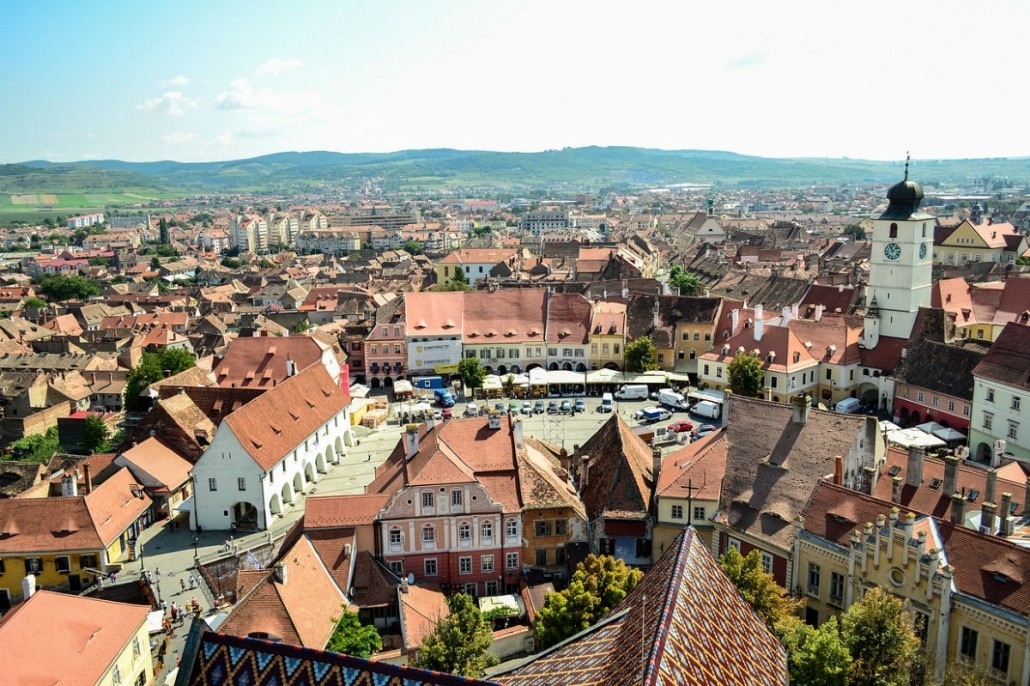
Sibiu old town is home to a variety of ancient architecture and heritage museums.
Renowned as Romania’s main cultural center, Sibiu boasts three major theaters and a philharmonic orchestra, together with many smaller venues for the performing arts. Visit the Sibiu International Theater Festival, an annual event which since 2016 has been the largest festival of its type in the world (surpassing for the first time more famous gatherings such as the Edinburgh International Festival). Sibiu was designated European Capital of Culture for the year 2007, and the old city area was ranked as the eighth most idyllic place to live in Europe by Forbes Magazine.
If you are visiting in December, be sure to check out the Sibiu Christmas Market. Inspired by traditional Viennese Christmas markets, it is held annually in the city’s grand square, and considered among the most beautiful Christmas markets in Europe.
Sighișoara: An Ancient Citadel Frozen in Time
Sighișoara is renowned as one of the best-preserved and most charming medieval towns in Europe. Designated as a UNESCO World Heritage Site, the settlement’s origins date back to Roman times. Walk through its historic central area and you will feel as if you have been transported back in time to the 16th century. Its elegant towers, cobbled streets, burgher houses and beautiful churches conjure a similar atmosphere to more famous destinations such as Prague, Salzburg or Vienna.
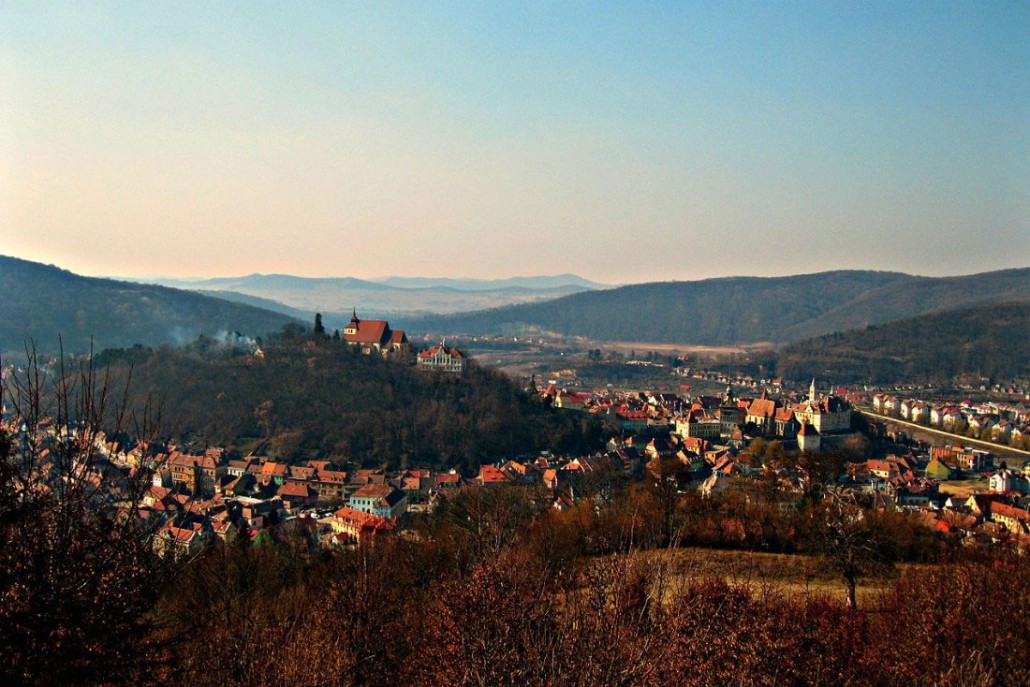
Sighișoara, one of Eastern Europe’s most picturesque medieval towns.
Sighișoara is known as the birthplace of Vlad Tepes, whose family home you can visit on Council Tower square. Also in this square you will find the city’s famous Clock Tower. At over 64 meters high, this landmark can be seen from almost every corner of the city.
Another must-visit is the Church on the Hill. A steep staircase leads up to this ancient place of worship, where you can view incredibly detailed frescoes that date back more than 500 years. Other popular sites include the Venetian House, which is named after its distinctive window frames, and the Church of the Dominican Monastery, a Gothic church famous for its impressive 17th century organ.
Cluj-Napoca: The Capital of Transylvania
Cluj-Napoca is located in the northwest of Romania, and is regarded as the unofficial capital of the Transylvania region. The city contains several important landmarks which date back to the days of Saxon and Hungarian rule. Home to around 325,000 residents, it is also a bustling modern metropolis characterized by its universities, bohemian cafes and vibrant nightlife.
The Gothic-style St. Michael’s Church dominates the old town’s central Union Square (Piața Unirii), where you can find a dramatic statue of the 15th-century king Matthias Corvinus. Take a short stroll across the road to view a fine collection of Romanian art, at the Art Museum of Cluj-Napoca. The museum is housed within the splendid Bánffy Palace. Completed in 1775, the palace is considered one of the finest examples of Baroque-style architecture to be found in all of Transylvania.
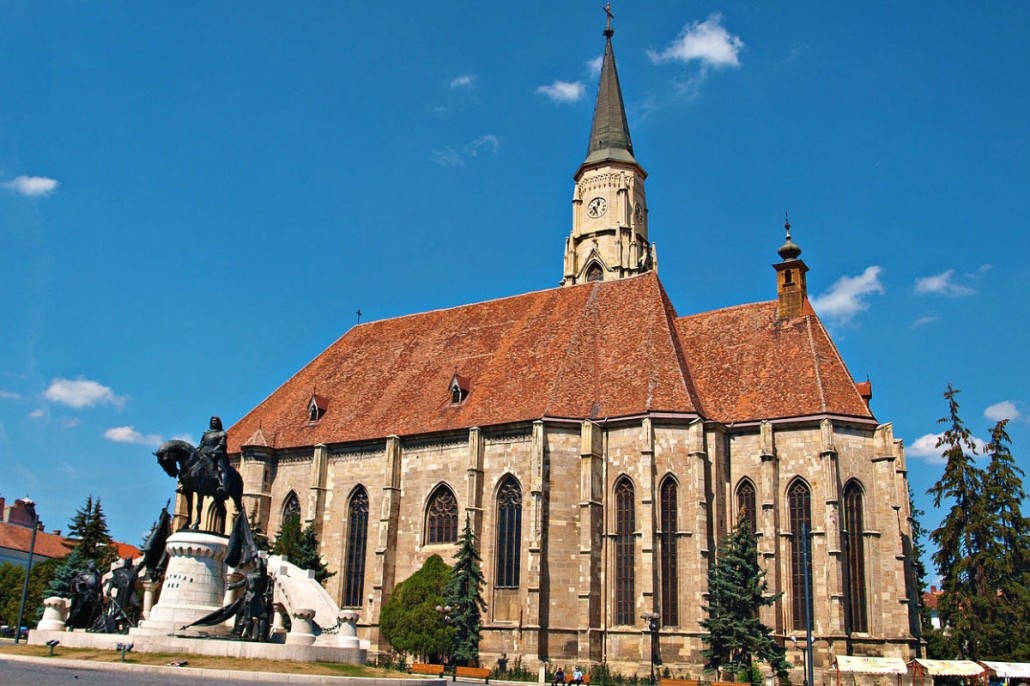
St. Michael’s Church, located in Union Square, dates back to the 14th century.
At Museum Square, just two minutes’ walk from Union Square, you can visit the Franciscan Monastery. This combination of Baroque and Gothic architecture dates back to the 14th century. The Transylvanian History Museum is also found here, which contains many interesting artifacts and displays charting the region’s heritage. In addition, Museum Square is the site of the old Obelisk of the City, a gift from the Austrian Emperor Franz Ferdinand in the 19th Century. You can relax and enjoy a coffee right next the Obelisk, on one of the many relaxing outdoor terraces which line the square.
If you feel like unwinding in more peaceful surroundings, head to the city’s Central Park. This popular green space hosts a small lake with rowboats for hire. The city also boasts a 14-hectare botanical garden, containing a small Japanese garden, greenhouses for tropical plants and a tower which offers you a better view of the pleasant surroundings.
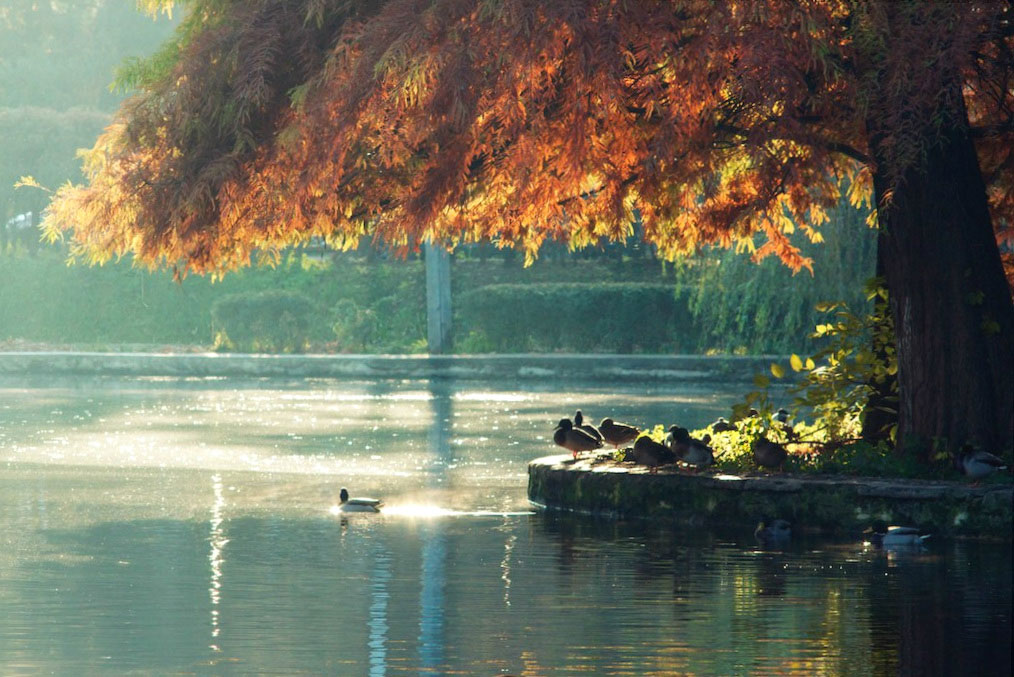
A family of ducks enjoy a relaxing afternoon on the lake in Cluj-Napoca’s Central Park.
Further Reading
As we have seen, Transylvania offers a rich and varied travel experience, which is far-removed from its somewhat dark reputation.
In the third and final part of our trip around Romania, we will take a look at some of the country’s other destinations which are popular with international visitors. From ski resorts and vast mountain ranges to relaxing beach holidays, Romania has something to offer everyone. Click below to learn more!
Romania in Focus Part One: Bucharest
Romania in Focus Part Three: Other Popular Destinations
Arrange Your Trip to Romania with Jetex
Planning a vacation to this charming destination? Arrange your trip with Jetex!
We deliver world-class trip planning services, including permit arrangements, ground handling, fuel uplifts and bespoke concierge services. Our dedicated operations team is on standby 24/7 to look after all the technical details of your journey, allowing you to relax and enjoy your trip.
To find out more about our services, please contact our team on +971 4 212 4000 or email info@jetex.com.



